Romania / România – Let’s explore here
What’s it like in Romania?
Romania was one of the biggest surprises for us on our European road trip in 2023 – it really has a very beautiful and incredibly varied landscape, having mountains, hills and plains roughly equal in area, including the Transylvanian plateau (think Count Dracula!). The absolutely magnificent Carpathian Mountains dominate the centre of the country, and there are lots of forests and national parks.
But mostly it’s the people that surprised us, as they’re some of the friendliest people we met, and wow, do they like to party and have fun! Almost every evening, no matter where we went, there was another group of people playing local music, laughing and encouraging us to join in … amazing 🙂
Its population is around 19 million people (2024), 2.3 million of whom live in and around the excellent capital city of Bucharest. Romania shares its land borders with Bulgaria, Hungary, Moldova, Serbia and Ukraine.
It’s roughly the same size as the United Kingdom, and the highest point is Moldoveanu Peak in the Southern Carpathians, at 8,346 ft (2,544m) above sea level.
Despite it being less developed in terms of tourism than many other countries in Europe, it absolutely has some of the best scenery to enjoy. But most of all the Romanian people really do know how to make the most of life, with constant singing and parties and festivals. Honestly, if you’ve not been, seriously consider it, it’s amazing! It also operates a digital nomad scheme, which you may find of interest.

A bit about the history of Romania
Early History and Dacians
The territory of modern Romania has been inhabited since prehistoric times. The Dacians, an ancient people, lived in the area and established a powerful kingdom in the 1st century BC. The Dacians were known for their rich culture and resistance to foreign invaders. In 106 AD, the Roman Empire, under Emperor Trajan, conquered Dacia after a series of wars, incorporating it as a province. Roman influence left a significant imprint on the region, particularly in terms of language and culture.
Medieval Period and Formation of Principalities
After the fall of the Roman Empire in the 5th century, the region was subject to invasions by various groups, including the Huns, Slavs, and Magyars. In the 12th and 13th centuries, the principalities of Wallachia and Moldavia were founded, and by the 14th century, these regions became important parts of medieval Europe. The principality of Transylvania was also established, initially as a part of the Kingdom of Hungary.
Ottoman Influence and Political Struggles
By the 16th century, the Ottoman Empire had gained influence over the Romanian principalities, especially Wallachia and Moldavia, though they remained semi independent under Ottoman suzerainty. Transylvania became a principality under Hungarian control. During this period, Romania faced internal struggles, as local rulers sought to maintain their autonomy while managing Ottoman pressures and European rivalries.
Union and the Modern Romanian State
In 1859, the two principalities of Moldavia and Wallachia united under the leadership of Alexandru Ioan Cuza, marking the foundation of modern Romania. This union was formalized in 1862, and Romania gradually expanded its territory. In 1877-1878, Romania fought in the Russo–Turkish War and gained full independence from the Ottoman Empire, recognised at the Congress of Berlin. Romania became a kingdom in 1881, with King Carol I as its first monarch.
World War I and Greater Romania
During World War I, Romania joined the Allied Powers and, after the war, achieved a significant territorial expansion. Following the Treaty of Trianon and other agreements, Romania incorporated Transylvania, Bessarabia and Bukovina, creating Greater Romania. This period of territorial expansion marked a high point in the country’s history.
Interwar Period and Political Instability
The interwar period in Romania was marked by political instability, with a rise in both royalist and nationalist movements. King Carol II established an authoritarian regime in the 1930s, and the country experienced economic difficulties, social unrest, and increasing influence from fascist and communist ideologies. Romania initially sided with Nazi Germany during World War II but switched allegiances to the Allies in 1944 as the tide of war turned.
Communist Era
After World War II, Romania fell within the Soviet sphere of influence and became a communist state under the leadership of the Romanian Workers’ Party. In 1947, King Michael I was forced to abdicate, and Romania became a people’s republic. Under the leadership of Nicolae Ceaușescu, Romania became a highly repressive regime characterised by widespread surveillance, censorship and economic mismanagement. Ceaușescu’s cult of personality and harsh policies led to significant suffering for the population.
Romanian Revolution and Post-Communist Period
In December 1989, widespread protests erupted against Ceaușescu’s regime, leading to the Romanian Revolution. The dictator and his wife were arrested, tried, and executed. Romania transitioned to a democratic republic and began the process of economic and political reforms. The country underwent significant changes as it shifted toward a market economy and sought closer ties with the West.
21st Century Romania
Romania joined NATO in 2004 and became a member of the European Union in 2007. Since the fall of communism, Romania has made significant progress in modernising its economy, improving infrastructure, and strengthening its democratic institutions. However, challenges such as corruption and political instability have persisted. Romania remains an important player in eastern Europe and is known for its rich cultural heritage, diverse landscapes, and contributions to global science, art, and history.

Romania road trip
We’ve created a blog for our road trip in Romania. You may find it helpful, and you may pick up some tips, or more likely mistakes not to make that we’ve made 😉 Our Romanian road trip was part of a much larger European road trip.
Gorgeous gorges!
On our Romanian road trip we travelled from Serbia along the magnificent Derdap Gorge in both directions (on either side of the gorge – one side in Serbia, the other in Romania). We also went to the stunning rock sculpture at Decebalus , which is within the gorge. We loved this whole area, it’s just so pretty, whilst at the same time very relaxing, and the people were really friendly.
Central Romania
Driving around in central Romania eventually took us to the lovely ‘town of eyes’, Sibiu. It’s a really touristy historic town that’s well worth a visit due to its amazingly beautifullly preserved architecture. Many of the other towns that we drive through were also really interesting, although our SatNav took us the wrong way down a one-way street due to ongoing redesign of one of the towns!
Mountain pass
The amazing Transfagarasan mountain pass was next, with its hairpin bends, and mountain top views. But wow, was it busy, so busy in fact that the traffic jam at the top stopped everyone’s journeys altogether for a while!
Transylvania
We couldn’t resist Dracula-mad Bran (where the annual festival was being held). Who knew that almost everything in one town could be vampire related?! What a laugh! We stayed at the aptly named Vampire Camping, and were bitten in our sleep! Though we’re pretty sure it was by mosquitos rather than vampires!!
The mountains
Travelling across the Carpathian mountains is awesome, and was one of the many highlights in amazing Romania. Not only are the views great, but the towns and ski resorts are special too,
The capital
On to the capital, mighty Bucharest! Wow, what a city, just incredible. So lively, everyone dancing in the streets, like a continuous party. Super friendly locals, fantastic bars, great food, amazing architecture, an incredible palace, just superb. As you can guess, we loved Bucharest!
Romania road trip part 2
From the capital we headed up one of the worlds most dangerous roads to Moldova and Ukraine, before doubling back into Awesome Romania.
We travelled back through Romania after visiting Moldova in order to get to the wedding in Italy in time! Due to having to spend five hours at border control between Moldova and Romania, and due to the enormous amount of car crashes in the country, with the resulting traffic queues, we ended up driving back across the whole country to Hungary, only stopping a few times due to the vast distances involved.
We did stop in Grumăzești, where an all night party was going on. What laugh the Romanians are! Do they ever sleep? 🙂
We also stopped on a small island in the middle of a lake for free, wow!. There was even a great restaurant and really clean bathrooms and showers, although the food wasn’t free 😉
We were blown away by Romania, most of our preconceptions were entirely wrong – a really beautiful country, filled with many, many relaxed and happy people. Really lovely!
Map of our road trip through Romania

This is a map of our road trip through Romania and Moldova, and inadvertently Ukraine. Our route took us from:
Romania: Clisura Dunarii – Derdap Gorge – Rock sculpture of Decebalus – Reșița – Cisnădioara – Sibiu – Transfagarasan – Bran – Bucharest
Moldova: Chișinău – Bender – Tiraspol (Transnistria)
Ukraine: Velykoploske
Moldova: Tiraspol (Transnistria) – Chișinău – Sculeni
Romania: Grumăzești – Călacea – Arad
Our favourite places in Romania
These are some of the best places that we explored on our road trip through Romania. We’ve put them in alphabetical order.
Bran – the home of Dracula!
Bran is a small town in the centre of Romania, and is home to the 14th century Bran Castle – famous for being Count Dracula’s Castle!
They are Dracula mad in Bran! Literally everything has some reference to the iconic vampire. There were almost ¾ million visitors to Bran in 2022, whereas the town has a population of about 5,000 people!!
On the night we visited, we stayed in the Vapirul campsite, about 10 minutes walk outside the small town. There was a lot of mist that night and we were bitten!! although most likely it was by mosquitos … probably! 😉 Also, we couldn’t find any fake Dracula teeth in Bran – hmmm, is that because there are only real vampire teeth in the town? 😉
Incredibly, the night that we stayed, the Bran festival was on, with lots of traditional music and local produce to eat – well worth a visit at that time!
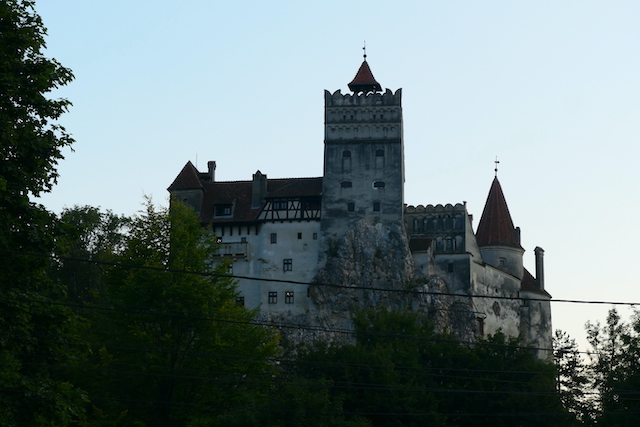

Bucharest
Bucharest is a large city in the south east of Romania, with a population of around 2.3 million people (2021). It’s also the capital of Romania.
We found Bucharest to be an absolutely incredible night out – lots of people having lots of fun, dancing in the streets. Lots of very cheap beer may have had something to do with it! It reminded us of a cross between London and Istanbul! Although it appears run down in places, inside the buildings are in great shape. We didn’t know what to expect of Bucharest, so we were really surprised just how great it really is.
Its a large city with some pretty crazy traffic one-way systems, so not easily navigated. There’s masses to see and do – it’s much more than a day-visit place. The former president, Ceaușescu’s crazy Palace of the Parliament building is a must see, of course – it’s absolutely massive and crazy! I’m sure the likes of Boris Johnson would have ordered one if he could have gotten away with it 😉 Despite now housing the whole of the current parliament and multiple museums etc, its still only thee quarters full. And to think that Ceaușescu wanted it for his private residence!!
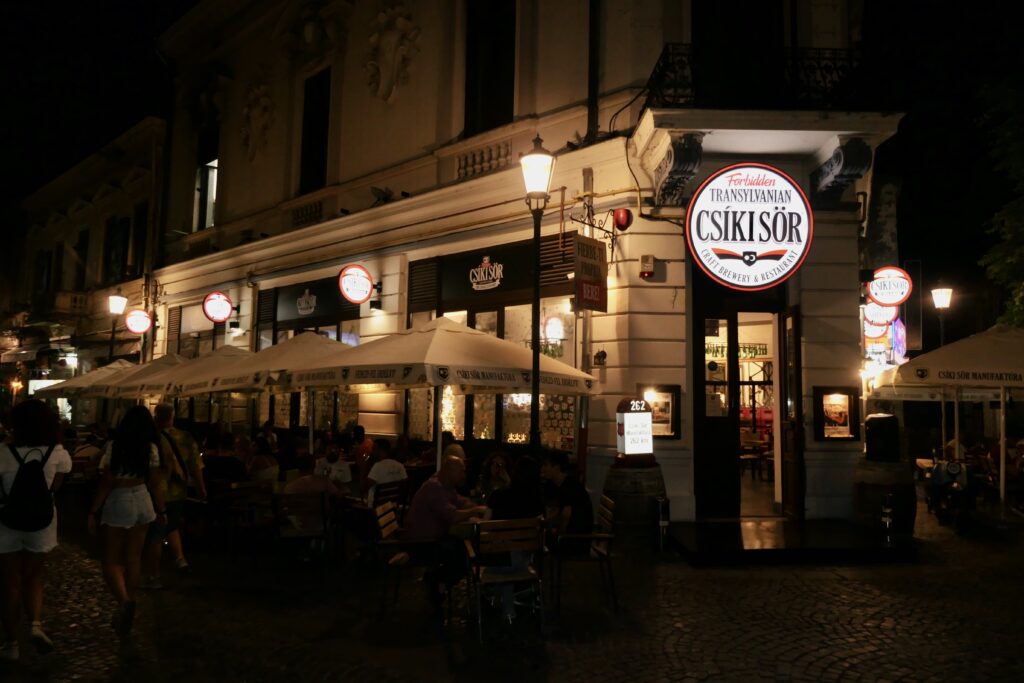
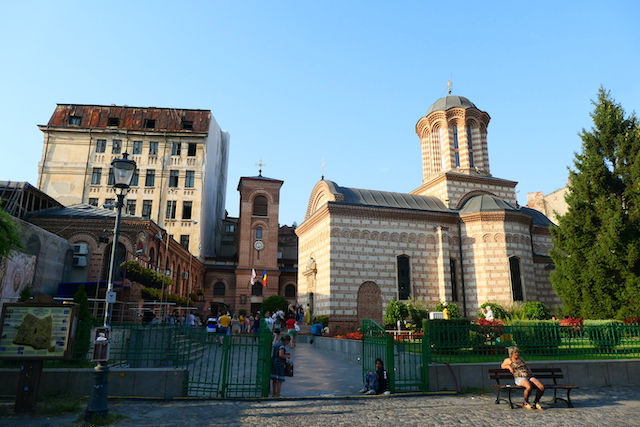

The Carpathian mountains
The Carpathian are the third longest mountain range in Europe, and mostly sit in Romania. They’re massive! They seem to go on forever! They’re magnificent! They’re so accessible! The views are incredible! They’re beautiful! We love the Carpathians!
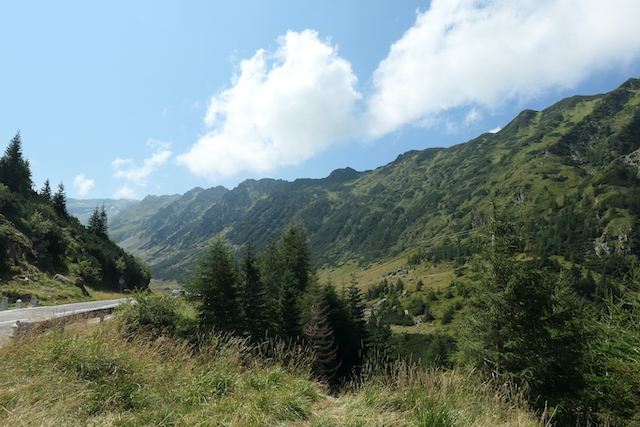
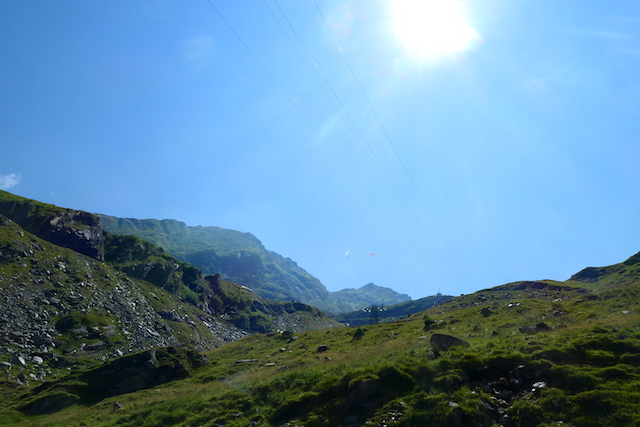
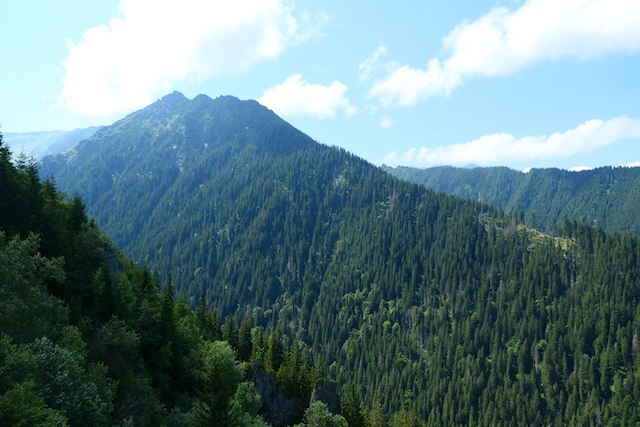
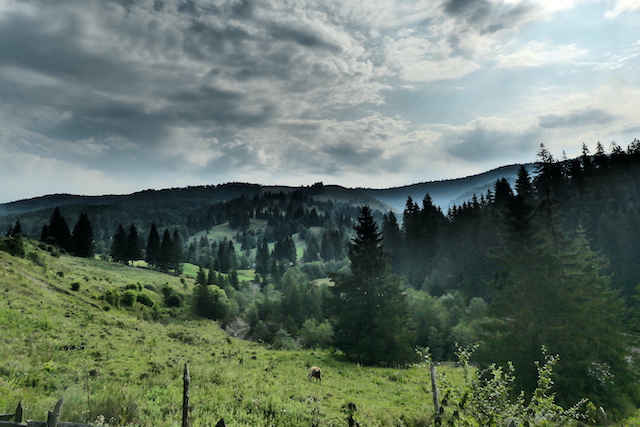
Đerdap Gorge / Iron Gates
Đerdap Gorge, also know as the Iron Gates is a magnificent gorge that forms the border between Romania and Serbia. Formed by the river Danube, it’s stunning steep walls create a natural boundary along it 83 mile (134 km) length.
The rock sculpture of Decebalus is located part way along the gorge and is simply stunning. Although it’s not very old – it was completed in 2004 – it portrays the face of former King Decebalus who fought off two Roman emperors, providing a great sense of pride and confidence within the nation. It can also clearly be seen from the Serbian side of the Derdap Gorge.

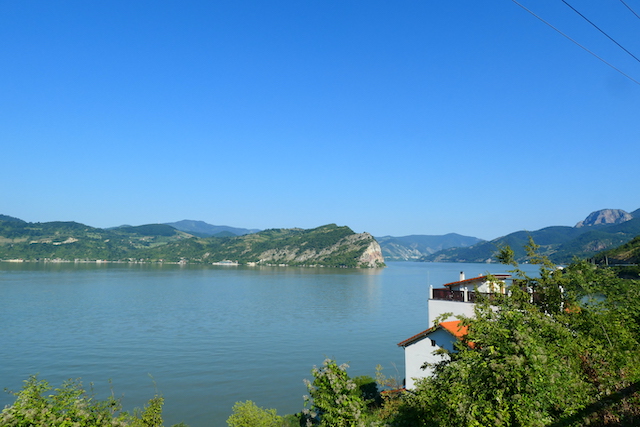
Sibiu
Sibiu is a UNESCO World Heritage site – due to how well preserved the fortified medieval town in Transylvania is. It’s a really beautiful place to visit, and is very well set up for tourism with a hugs amount of cafés and restaurants to choose from. Located in central Romania, it used to be the capital of Transylvania. It’s also known as the town with eyes, due to the windows in the rooftops.

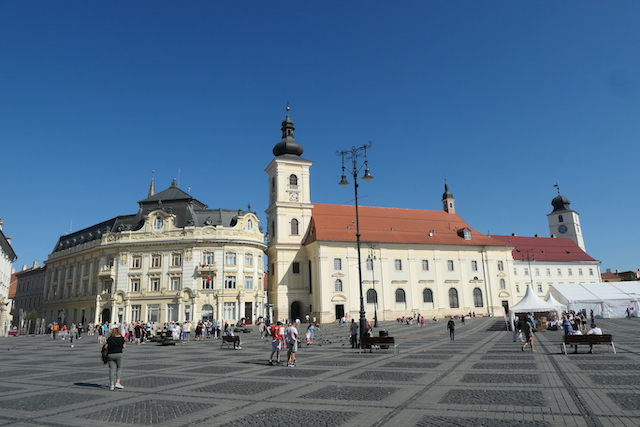

Transfagarasan
Transfagarasan is a magnificent, if massively overcrowded highway, up the mountains and though the forests to Arefu. Set off early to avoid the crowds and enable an actual road trip up the pass. If you’re too late you’ll be stuck in traffic for hours!
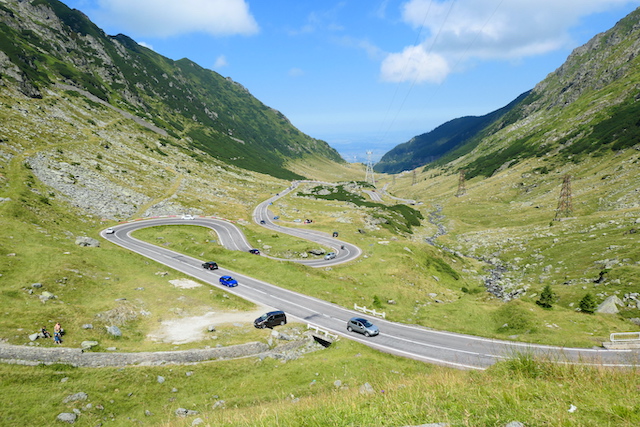


What’s it like to drive in Romania?
As with almost everywhere on the continent of Europe, they drive on the right hand side of the road in Romania.
Romania has the highest road deaths per capita in the European Union! We saw right in front of us, on average THREE car crashes a DAY, some definitely deadly and all totally unnecessary! Utter madness! There’s much more about this in the Romanian blog.
Driving standards in Romania
Driving standards in Romania are really very poor – the worst that we’ve seen in Europe. Many drivers take extreme risks driving on the wrong side of roads on hairpin bends, or where they clearly cannot see ahead – really very dangerous! As a result of this we saw multiple car crashes happen every day – some right in front of us, some really close – just ridiculous! Romanian drivers just don’t seem to learn at all, despite the evidence right in front of them!
Romanian roads in the main are pretty busy, and it seems that people are generally in a hurry!! Also, for some reason, they don’t slow down in villages, and we were regularly overtaken by cars speeding at 70-80mph!! Beware!!
Also in Romania, just to add to the confusion, they indicate left on approach to roundabouts in order to travel straight on!
Road conditions in Romania
Many roads are in a poor state, especially those on hills – where the tarmac appears to have melted, and the patchwork repairs of potholes is very poor. There are also many, many potholes larger than three feet in diameter, many of which are very deep. Again, as in many of the countries that we’ve travelled through, there’s an enormous amount of construction at hand, so maybe the roads will improve dramatically in the near future?
Also, you know when you see the road sign warning you of falling rocks – well in Romania it’s quite common to encounter scenes like this:

Do you require an international driving permit in Romania?
We’ve created a dedicated page to driving abroad, which answers this question, and more, which you might find helpful.
Can you use your UK driving license when driving through Romania?
We’ve created a dedicated page to driving abroad, which answers this question, and more, which you might find helpful.
Do I need a carnet de passages to drive in Romania?
We’ve created a dedicated page to driving abroad, which answers this question, and more, which you might find helpful.
What are the speed limits in Romania?
The speed limits for cars in Romania are:
- 30 mph (50 km/h) for urban driving
- 55 mph (90 km/h) outside of built up areas
- 60 mph (100 km/h) on dual carriageways
- 80 mph (130 km/h) on motorways
What currency do they use in Romania?
In Romania they use the Romanian leu. The use of credit / debit cards is now widespread, although not guaranteed – have some cash just in case, particularly in rural areas. Euros are also accepted in many camp sites, as are Pounds sterling in some! Travellers cheques are accepted in major cities. There are lots of ATMs.
You should make yourself aware of the amount that your bank charges you for using credit and debit cards abroad. Often credit cards are cheaper for purchasing items directly, and for withdrawing cash from ATMs.
What language do they speak in Romania?
They speak Romanian in Romania, although Hungarian is also spoken in some areas. About a quarter of the population speak either English or French.
What time zone is Romania in?
Remember, when you’re planning your next trip to take a look at what time zone it’s in.
Do I need a visa to visit Romania?
We’ve created a dedicated, more comprehensive page on visas, which you should find helpful. Check it out!
What plug / socket type do they use in Romania?

In Romania they use plug / socket type F.
Is wild camping legal in Romania?
No, wild camping is illegal in Romania, although it is well tolerated.
Health issues in Romania
Is it safe to drink water in Romania?
No, it is not safe to drink tap water in Romania. Bottled water is readily available across the country.
What vaccinations are required for Romania?
This NHS website is kept up to date with all relevant information on vaccinations in Romania.
Phones in Romania
What is the country calling code for Romania?
The country calling code for Andorra is +40
What are the emergency phone numbers in Romania?
- The emergency number for police in Romania is: 112 / 911
- In Romania, the emergency number for ambulance is: 112 / 911
- The emergency number for fire in Romania is: 112 / 911
If you’ve got some useful info that you’d like to share, let us know!
And don’t forget to check out all the other pictures!
